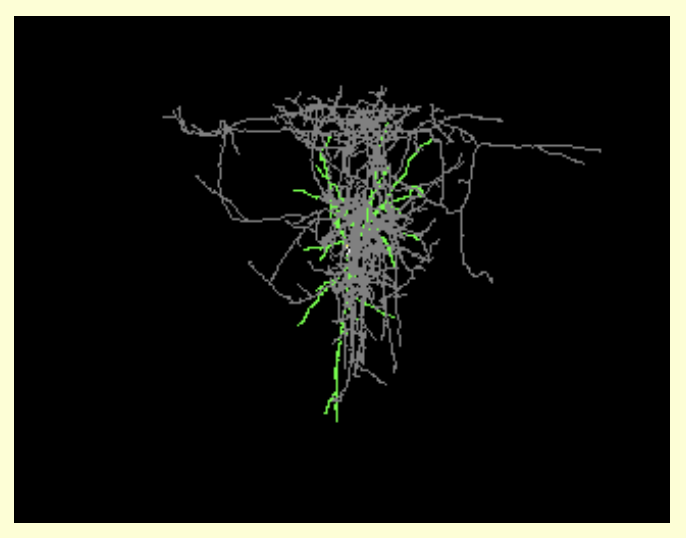Proper Citation: CTSAconnect (RRID:SCR_005225)
Description: THIS RESOURCE IS NO LONGER IS SERVICE. Documented on December 5th, 2022. Semantic framework to integrate information about research activities, clinical activities, and scientific resources to facilitate the production and consumption of Linked Open Data about investigators, physicians, biomedical research resources, services, and clinical activities. The goal is to enable software to consume data from multiple sources and allow the broadest possible representation of researchers'''' and clinicians'''' activities and research products. Current research tracking and networking systems rely largely on publications, but clinical encounters, reagents, techniques, specimens, model organisms, etc., are equally valuable for representing expertise. CTSAConnect will provide linkage between semantic representations of a wide range of clinical and research data using controlled vocabularies mapped to the Unified Medical Language System (UMLS) as a bridge between the two subject areas. The data sources include data from Medicaid, hospital billing systems, CTSAShareCenter, and other CTSA resource data, eagle-i and VIVO. It allows institutions to leverage existing tools and data sources by making the information they contain more discoverable and easier to integrate. For instance, with the ISF, researchers can be characterized by organizational affiliations, grant and project participation, research resources that they have generated, and publications that they have (co)-authored. Clinicians can be characterized by training and credentials, by clinical research topic, and by the kinds of procedures and specialization that can be inferred from encounter data. LOD refers to data that has been given a specific Uniform Resource Identifier (URI), for the purpose of sharing and linking data and information on the Semantic Web. While a large amount of data is published as LOD, there remains a significant gap in the representation of research resources and clinical expertise. Researchers can be characterized by the organization to which they belong, the grants and research in which they have participated, the research topics and research resources (reagents, biospecimens, animal models) they have generated, as well as the publications they have (co)-authored. Clinician profiles on the other hand, can be defined by their credentials, clinical research topics, and the kinds of procedures and specialization that can be inferred from clinical encounter data. They believe that integrating and relating this diversity of information sources and platforms requires addressing the overlap between research resources and the attributes and activities of researchers and clinicians. CTSAconnect aims to promote integration and discovery of research activities, resources, and clinical expertise. To this end, they will publish their ontologies and LOD via their website, which will also illustrate repeatable methods and examples of how to extract, consume, and utilize this valuable new LOD using freely available tools like VIVO, eagle-i, and Google APIs. CTSAconnect is a collaboration between Oregon Health & Science University, Stony Brook University, Cornell University, Harvard University, University at Buffalo, and the University of Florida, and leverages the work of eagle-i (eagle-i.net), VIVO (vivoweb.org), and ShareCenter (ctsasharecenter.org).
Abbreviations: CTSAconnect
Synonyms: CTSAconnect: A Linked Open Data approach to represent clinical and research expertise activities and resources, CTSA Connect, Clinical and Translational Science Awards Connect
Resource Type: standard specification, knowledge environment, controlled vocabulary, data or information resource, ontology, service resource, source code, narrative resource, software resource
Keywords: data sharing, clinical, research, semantic framework, linked open data, collaborate
Expand Allis related to |
|
is related to |
|
is related to |
|
is related to |
|
is related to |
|
has parent organization |
|
has parent organization |
We found {{ ctrl2.mentions.total_count }} mentions in open access literature.
We have not found any literature mentions for this resource.
We are searching literature mentions for this resource.
Most recent articles:
{{ mention._source.dc.creators[0].familyName }} {{ mention._source.dc.creators[0].initials }}, et al. ({{ mention._source.dc.publicationYear }}) {{ mention._source.dc.title }} {{ mention._source.dc.publishers[0].name }}, {{ mention._source.dc.publishers[0].volume }}({{ mention._source.dc.publishers[0].issue }}), {{ mention._source.dc.publishers[0].pagination }}. (PMID:{{ mention._id.replace('PMID:', '') }})
A list of researchers who have used the resource and an author search tool
Find mentions based on location

{{ ctrl2.mentions.errors.location }}
A list of researchers who have used the resource and an author search tool. This is available for resources that have literature mentions.
No rating or validation information has been found for CTSAconnect.
No alerts have been found for CTSAconnect.
Source: SciCrunch Registry





